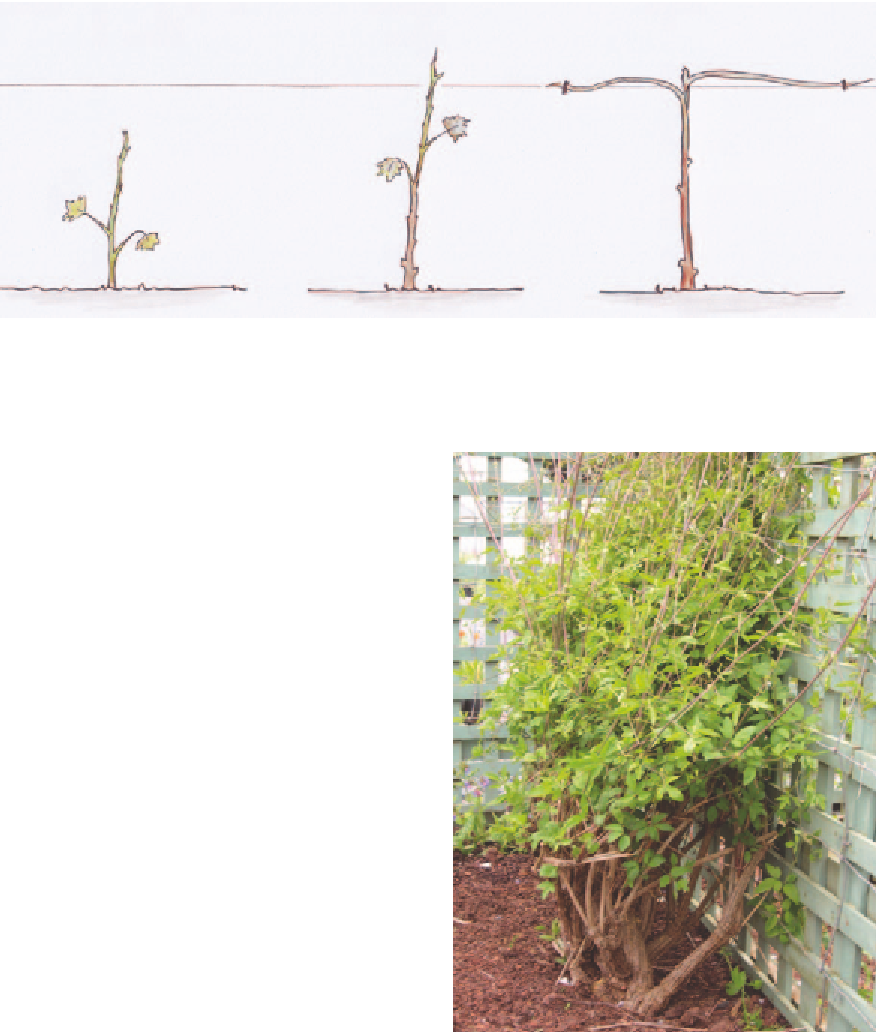Agriculture Reference
In-Depth Information
Figure 4.89
Training a climber to form a canopy over one main stem.
and fruit. This will depend on what sort of
growth the climber flowers on.
dead or diseased wood. Once the vine is
established, cut back hard one major stem
Climbers that flower on new season's growth
This group is easy to prune and renovate,
especially the long-lived species. They can be
left alone to fill their space. As they flower
and fruit on growth produced in the current
growing season, however, they will eventually
flower only at a distance from the centre of
the plant which will become tangled and
unproductive (see Table 4.22).
Many plants, especially clematis in this group,
benefit from being cut back to within 40 cm
of the ground in the dormant season (see
Figure 4.90).
Other plants such as
Passiflora edulis
(black
passionfruit) would not tolerate this
treatment and many pruners are unwilling to
be so severe. The penalty is a more time-
consuming and considered approach.
In spring, cut back the new growth to about
30 cm, remove some completely to allow for
good air circulation, and of course prune out
Figure 4.90
Clematis can be cut back extremely hard and
recover with renewed vigor. (Photo taken at 'Burnside',
Ascot, Victoria. See www.lambley.com.au)

